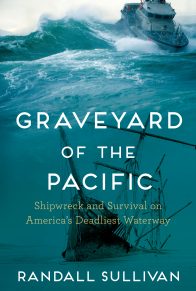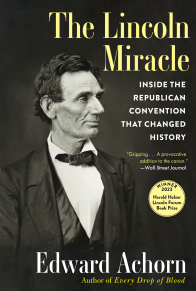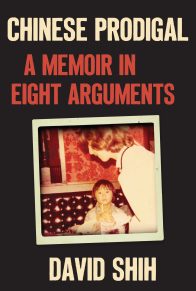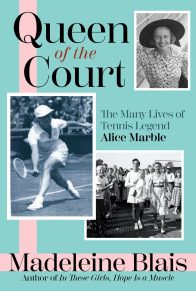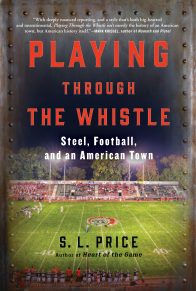When Millie Bliss was toiling as a teenage waitress on an Indian reservation in New Mexico, the possibility that her life would become the centerpiece of a book eighty years later was unimaginable. But Bliss, better known to sports fans as Mildred Burke, dared to imagine. From her Depression-era roots, she rose to become a pioneer of women’s wrestling, and one of the most recognizable female athletes of the twentieth century.
Leen: After my last book, which was an investigation of the world’s most dangerous criminals and required doing research in fifty federal court cases, I wanted to do something very different. I wanted to write a narrative with lots of dramatic twists and a single strong main character. I was also looking for a story that was very visual. I thought pro wrestling was a great subject because it resonates on so many levels and it has such a great, subterranean history. Most baby boomers, if they are honest, will admit to being captivated by pro wrestling on TV when they were kids, in the age of Howdy Doody, Wagon Train, and Gunsmoke. People today tend to dismiss pro wrestling as vulgar, garish, brutal, and fake, but between 1900 and 1910 it was probably the most popular sport in America. More people saw the Gotch-Hackenschmidt match in 1911 than had attended any of the thirty-odd World Series games up to that point.
I had known about Mildred Burke’s story dating back to when I was a kid in St. Louis, reading the wrestling magazines in the 1960s. I thought she was a phenomenal character. So much about her seemed incongruous and otherworldly. The first female athlete to earn $1 million was a lady wrestler in the 1930s and 1940s? Who knew? She seemed like some kind of superhero, only 5-2 and 120 pounds, but a wrestling champion for nearly two decades. She was incredibly tough and gutsy. She was a pregnant, eighteen-year-old waitress when she started out in the Depression in 1934, but she ended up as successful as any man in a “man’s sport” during an age when women were supposed to stay in the background and not break a sweat. She delighted in flexing her biceps and talking tough but she also liked to doll herself up in silks dresses, minks and diamonds. When Seabiscuit came out in 2001, I saw immediate parallels with Mildred. Both were Depression-era underdogs. Both were small and underestimated. Both triumphed when put to their severest tests, Seabiscuit against War Admiral in 1938, Mildred against June Byers in 1954. When I came across the fact that Burke and Byers had met in a climactic bout that was probably the last shooting match of the twentieth century, that sealed it for me.
SLAM! Wrestling: Did you follow pro wrestling when you were growing up or in recent years?
Leen: As a kid, I was a fan of almost every sport: baseball, football, basketball, hockey, boxing and wrestling. Wrestling was huge in the Midwest, both in high school and the pros. Growing up in Minneapolis in the early 1960s I was a big fan of Verne Gagne and Crusher Lisowski. I got very involved in wrestling as an eight- or nine-year-old. Then we moved to St. Louis and I followed Harley Race, Cowboy Bob Ellis, Dick the Bruiser, etc. These big, tough, muscular men who seemed to fly through the ring were who me and my friends wanted to be when we grew up. Lou Thesz, I was aware of, but he seemed to be from a distant past. I didn’t understand how great he was until I read Stanley Elkin’s Boswell, and came across an ancient wrestler called the Grim Reaper who could cripple younger men with a single hold. This was a first novel by an acclaimed literary fiction writer and he had a character based on Lou Thesz! Wrestling permeates the culture in so many ways. I got into Mil Mascaras as a kid and was astounded when I met him at the Cauliflower Alley Club in Las Vegas, and at 6-1, I seemed to tower over him. He still had the muscles, though. I haven’t followed it so much in recent years because I liked the old-school style I watched as a kid. But I took notice of the great changes and success that young Vince McMahon brought in the 1980s and later: Wrestlemania, Hulk Hogan, The Rock, Triple H, Chyna. It was amazing to see how big the game became again.
SLAM! Wrestling: Though it’s loosened up somewhat, wrestling is still a pretty closed business. What problems did you encounter as an outsider trying to learn about the inside of the business?
Leen: I approached it as an investigative reporter. I learned as much as I could from the Internet, from books, from old magazines in the Library of Congress, from online newspaper archives, and finally from Jack Pfefer’s archive at the University of Notre Dame. Pro wrestling gets no respect, and neither does pro wrestling research, but I was driven by the idea of treating the subject very seriously and respectfully, of doing my best to try to get to the truth of it and capture its flavor. A lot of amazing stuff has accumulated over the years about this little corner of Americana, and I tried to absorb and make use of all of that. Marcus Griffin’s book, Lou Thesz’s book, the book that Strangler Lewis and Billy Sandow wrote in the 1920s, A. J. Liebling in The New Yorker, Roland Barthes’s essay, Steve Yohe on the Internet, etc. Then I got records virtually nobody had looked at: court, marriage, divorce, bankruptcy, property, incorporation, and the Department of Justice antitrust case against the National Wrestling Alliance. Who knew that Mildred Burke owed Gorgeous George $3,000 in 1958?
The fact that most of the material had been tracked over by few others, if any, made it that much more enjoyable to research. After I had steeped myself in facts, I went out in the field for interviews. I started by attending the reunion of the Cauliflower Alley Club in Las Vegas. People were remarkably welcoming; let’s face it, we’re a couple decades beyond kayfabe at this point. But I realized that my story might be too old, even for the CAC. She pre-dated Gorgeous George, after all. So the challenge was to track down the people who still had memories and to check those memories as best I could against the record I had accumulated. I went to Marengo, Illinois, to interview Billy Wolfe’s grandchildren and paged through his business ledgers. They were as interested in learning about their heritage as I was. I found Gloria Barattini running a bar in western Maryland. I spent two days with Gladys Gillem in Pensacola, Florida, buying lottery tickets and playing poker. I stood outside the one-room shack in Coffeyville, Kansas, where baby Mildred lived in 1915. In a gigantic state archive in Columbus, Ohio, after two days of searching, I found the pre-match build-up that Wolfe, Burke, and Nell Stewart staged for the Ohio State Journal before their big match in 1952. It was in many ways a gigantic puzzle where a shard from a newspaper might resonate against a fragmentary quote, a cryptic allusion, or a record in a court file.
SLAM! Wrestling: There are a lot of wrestling books on the market but Mildred Burke is a pretty obscure name, even to a lot of fans. How did you convince a publisher to take a chance on her story?
Leen: I sold it as more than just a wrestling story. It was a human-striving story, about one woman who was forty or fifty years ahead of her time, and about all the struggles, compromises, and hard knocks she had to overcome. The twists and turns of her story bear out the phrase that the truth is better than fiction. It was fresh and original. It was a tale about the realization of great fame, but it was also about the cost of great fame. The fact that she was now an obscure figure was a strength, rather than a deficit. That made it also about the fleeting nature of great fame. Who burns brighter than a victorious champion before ten thousand screaming fans? But what passes quicker than applause?
SLAM! Wrestling: How long did it take you from start to publication?
Leen: I nursed the idea for about a decade. (My last book came out in 1989.) The serious reporting and writing began about five years ago. I wrote it at night and on weekends in my spare time while I worked at The Post.
SLAM! Wrestling: You wrote in the book that you had some help from Burke’s family. What kind of assistance did they provide and did they have any qualms about the way you planned to portray Mildred?
Leen: [Son] Joe Wolfe granted me permission to use Mildred’s unpublished autobiography and her photographic archive. He was remarkably objective and professional. He was the best living witness for much of the story, and he refused to speculate when he couldn’t remember something or didn’t know. He refused to dump on Billy Wolfe, who he said treated him fairly. He read the first draft and had only one big complaint: he said the chapter on the history of history going back to the Greeks was boring. He was right about that. I cut the chapter and recast the material after others voiced the same complaint. But Joe didn’t challenge a word I wrote about his mother, including a lot that was extremely unflattering.
SLAM! Wrestling: Are there any similarities between the work you did on the Burke book and the kinds of investigations you oversee as an editor at The Washington Post?
Leen: Research is research, and investigating is investigating, regardless of the subject. At The Post, we build our investigations out of interviews and documents, and I tried to do the same for my book. I was thrilled to find out that Mildred Burke’s story intersected with a massive antitrust investigation of pro wrestling, because such cases are the kinds of things I have made a career out of looking at. Reading about Burke’s bankruptcy as a fleeting one-line sentence in The Ring in 1958, and then finding the actual file in San Diego fifty years later was also a thrill. Checking the facts in her autobiography against the record was also very close to my day job at The Post, where we spend a lot of time sorting through competing claims about the truth.
SLAM! Wrestling: What qualities made Burke such a star, not just in wrestling, but as part of pop culture?
Leen: I think I said it best in the book: “What she had envisioned and then created was something no one had seen before: a female champion who was both feminine and strong, beautiful and powerful, combining the physique of an athlete with the sex appeal of a bathing beauty and the glamour of a movie star.” To me it sums up everything that made Mildred unique: beauty, athleticism, sex appeal, and glamour. There were women wrestlers before Mildred, but they were not sexy and they were certainly not glamorous, even Clara Mortensen, who was a beautiful woman but did not project beauty and glamour the same way Mildred Burke did. And none of the others were nearly as famous. There were famous female athletes before Mildred, but with the exception of that other Mildred, Babe Didrikson, they did not display muscles and power the way that she did, or challenge men the way she did. She was such a striking figure, in her white suits with her bulging biceps and six-pack abs. And she had style, those diamonds and minks and silk dresses were a huge part of her appeal. Babe Didrikson did not have that. To find the combination that was Mildred Burke you have to think about women like Martina Navratilova or Serena Williams or Dara Torres, who came decades later. As is the case with those three female superstars, behind Mildred’s incredible physical presence was her incredible will. Hers is a story of resilience, persistent, guts, and smarts.
Also, I agree with John Capouya’s book that Gorgeous George might be said to have set the course of American pop culture by his influence on Elvis, Dylan, and Ali. And I think there is no question that Burke influenced George, although he was also influenced by people like Lord Lansdowne and others. But Burke appeared on cards with George in the early 1940s when he was drab George Wagner and she was the main event and the most glamorous thing wrestling had seen up to that point. There had to be some good reason that he loaned her $3,000 in the 1950s, which was a good working wage for an entire year.
SLAM! Wrestling: What surprised you most about Burke’s story as you put it together?
Leen: Two things that are really one thing.
We are defined by the obstacles we overcome, and to that extent, Mildred Burke has few peers. I was surprised by the dimensions and nature of Burke’s opponents. Not just her opponents in the ring, and not just the public opinion and mores that were against women wrestling. Billy Wolfe was a formidable opponent, tough, smart, devious and ruthless. And she didn’t just go up against Billy Wolfe. She went up against the entire NWA, which was so tough and devious that it brought on a massive justice department antitrust investigation. Finally, she went up against June Byers, perhaps the most formidable specimen among the women wrestlers, in a shooting match. Add all that up and its many different kinds of courage and toughness in one little woman who stood five feet, two inches tall.
So the first thing that surprised me was that the obstacles she faced were even greater than I had imagined. And she turned out to be tougher than I had imagined, so tough that it almost requires a new word to describe it. One of the earlier reviewers called her “a mulish cipher,” but I think she was much more than that. That phrase is just too belittling and scornful, too withholding of respect. She kept going even when her entire life collapsed on her: love walked out, she lost the championship, she lost all her money, the fame was gone, she had nothing, she had to rebuild. She started over, and trained other women to wrestle, worked for Hollywood, made her films. She did not quit. She had this incredible will. I made the point in the book that two of the greatest male wrestlers of all-time, George Hackenschimdt and Joe Stecher, had quit in the ring during their greatest matches. Well, Mildred Burke did not quit, ever.
SLAM! Wrestling: As part of their job, editors routinely ask, “Why should people read this story?” Why should people read this story of Mildred Burke?
Leen: Because it’s a good story. And it’s never been told before. It’s a story of sex, intrigue, abuse, corruption, and one woman who triumphs over it all. And it’s also a story about pro wrestling and why people care so much about it.





